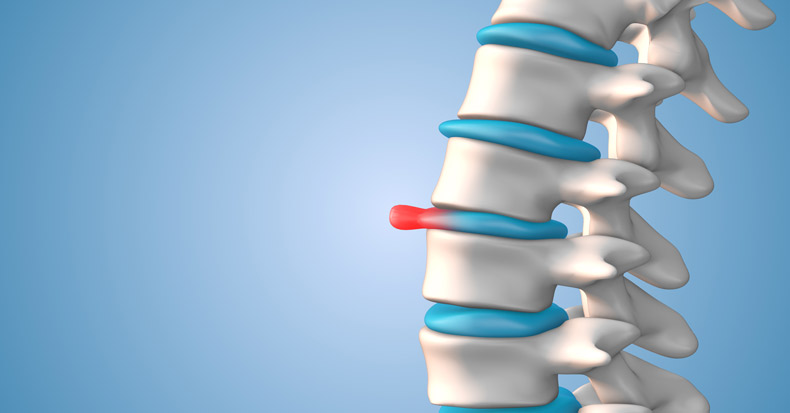The intervertebral disk is made up of a tough outer annulus fibrosis while the central portion (called the nucleus pulposus) is soft, more liquid-like, giving it a shock-absorbing function. If the integrity of the annulus is compromised, the nucleus pulposus can leak through the torn fibers, which is known as disk herniation. If the direction of herniation is not near a nerve or pain-sensitive tissue, there may be few, if any, symptoms. However, if the herniated tissue presses on a nerve root as it exits the spine, an individual may feel sensory (numbness, tingling) and/or motor (muscle weakness and atrophy) symptoms in the buttock and down into the leg.
If a red flag is present such as cancer, fracture, infection, or a sudden inability to control bowel or bladder function (a symptom of cauda equina syndrome), the patient may require immediate emergency and/or surgical intervention. However, outside of these circumstances, current guidelines published by the North American Spine Society on the clinical assessment and management of lumbar disk herniation and lumbar radiculopathy recommend non-operative treatment as a first-line therapy approach, which includes chiropractic care.
One of the mechanisms by which non-surgical care can result in a successful, satisfying outcome is by enabling the body’s ability to resorb the herniated disc material. The authors of a 2023 study noted that resorption may occur in a significant degree in roughly 70% of disk herniation cases due to the combination of factors such as inflammation and neovascularization (the formation of a new network of blood vessels), dehydration, and mechanical traction. The paper also noted that resorption may be more likely in cases where the herniation is larger or sequestered (the material has lost all connection with the original disk material), if inflammation is present, and if the herniation is in proximity of the posterior longitudinal ligament, which has its own blood supply and can influence healing. Of note, the authors speculate that because inflammatory processes may be highly important for disk resorption, the common practice of prescribing anti-inflammatory drugs in cases of acute disk herniation may need to be reconsidered as it could impair the healing process.
To facilitate healing, doctors of chiropractic will employ a multimodal approach using manual therapies (including spinal manipulation, specific exercises, physiotherapy modalities, traction, activity modifications, and even diet/supplement recommendations). If the patient’s symptoms fail to resolve, their chiropractor may refer them to their medical physician or a specialist for more invasive treatments with surgery as a last resort.



